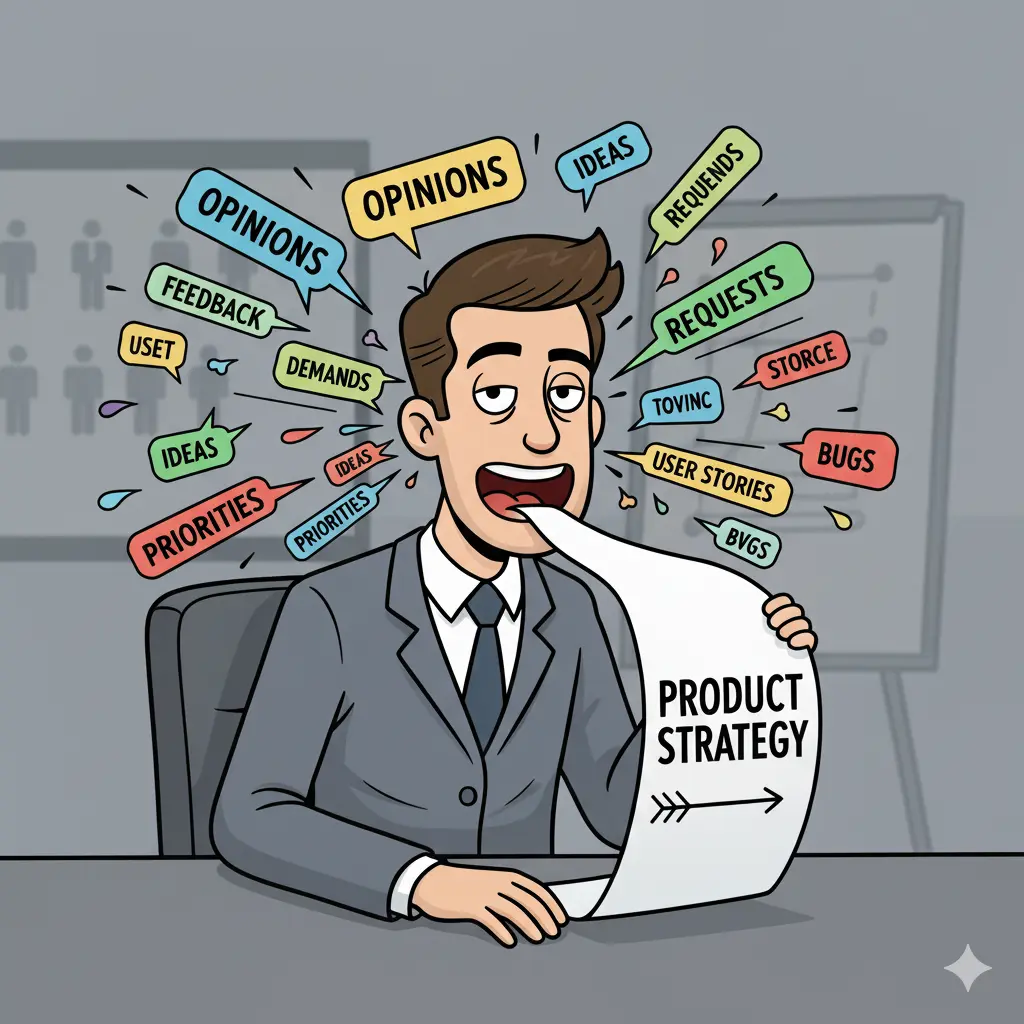
You're Not Building Products, You're Translating Them
The hidden complexity of product management isn't strategy or specs, it's explaining the same damn thing to six different audiences without losing your mind.
Product managers enter the field dreaming of flow states and strategic breakthroughs. They imagine themselves as architects of digital experiences, crafting elegant solutions to complex user problems. The reality? You’re a professional translator who happens to work on product features instead of languages.
The most unexpected challenge in product management isn’t the technical complexity or market competition, it’s the relentless need to reframe identical information for different stakeholders. Think about a single feature: you’re not building one product, you’re building six different versions of the same story.
The Translation Layer Nobody Talks About
Product managers often describe their role as being the connective tissue between teams, but that metaphor falls short. You’re not just connecting, you’re actively translating between fundamentally different languages spoken by engineering, marketing, sales, leadership, support, and customers.
Consider how one feature gets explained across an organization:
- Developers get technical specs, user stories, and API documentation
- Marketing receives benefit-focused messaging for blog posts and campaigns
- Sales gets competitive positioning and one-pagers focused on closing deals
- Leadership sees three-slide decks with ROI and strategic alignment
- Support receives internal knowledge base articles with troubleshooting steps
- Customers get simplified explanations that highlight immediate value
Each audience requires different details, different tones, and different success metrics. It feels like you’re constantly rewriting the same story, just in different languages for different countries.
Why This Translation Work is So Damn Hard
The challenge isn’t just the volume of communication, it’s the cognitive context switching required. You’re not just changing slides, you’re changing entire mental models.
Sales teams operate on a completely different wavelength than engineering teams. Where developers want technical precision, salespeople need persuasive narratives. This mismatch creates friction that many PMs find particularly challenging. Sales professionals often project confidence that can mask genuine understanding gaps, leading to situations where PMs end up joining sales calls to clarify technical details for the client days after initial explanations.
Leadership communication presents another layer of complexity. Executives don’t need the technical details, they need to understand strategic impact, resource allocation, and business outcomes. The three-slide deck constraint forces PMs to distill weeks of work into its most essential components, a skill that takes years to master.
Turning Translation into a Superpower
The most effective product managers don’t fight this reality, they systematize it. They treat communication as a product in itself, with different “features” for different “user segments.”
Create Communication Templates That Scale
The key is to create templates, templates, and more templates to make everything repeatable and predictable. The goal isn’t to be robotic, but to eliminate unnecessary cognitive overhead. Having standardized formats for different audiences means you can focus on content rather than formatting.
Effective templates include:
- Technical specifications with consistent structure for engineering teams
- Sales one-pagers with pre-defined sections for value propositions
- Leadership updates with standardized metrics and progress tracking
- Marketing briefs with clear customer benefit frameworks
Map Communication to Audience Goals
The most successful PMs don’t just share information, they connect it directly to their audience’s objectives. They tailor their messaging to their goals specifically, explaining how this feature will help their goal of increasing sales by 5% by doing the following…
This requires understanding what each stakeholder group actually cares about. Engineering wants technical elegance and maintainability. Marketing wants compelling stories and differentiation. Sales wants ammunition for competitive battles. Leadership wants strategic alignment and ROI.
Embrace Visual Communication Tools
Many product managers find that visual tools like Miro ↗ or similar platforms help bridge communication gaps. Visual explanations and analogies can convey complex concepts more effectively than paragraphs of text, especially when dealing with mixed technical and non-technical audiences.
Over time, many PMs develop a style of partly visual communication that explains concepts to all levels of the organization. This approach helps create a common understanding that transcends departmental jargon and priorities.
The Professional Translator Mindset
What separates good PMs from great ones is treating communication as a core competency rather than an administrative task. The most effective approach involves:
Continuous skill development in presentation and influence techniques. This isn’t a “soft skill”, it’s a critical business capability that requires dedicated practice and improvement.
Systematic feedback loops where you regularly ask stakeholders if they’ve been using a template for a bit and if they have any suggestions on changing it to better suit their needs. This creates ownership and ensures your communication approaches remain effective.
Applying product thinking to communication itself. If you enjoy delivery, problem solving, and flow states, apply those same methodologies to your communication challenges. Think of it as social engineering or mind hacking - systematic approaches to complex human systems.
The Unseen Value of Translation Work
This constant translation work might feel like overhead, but it’s actually where product managers create their most significant value. The ability to align disparate teams around a shared vision is what separates successful products from failed ones.
When done well, this translation work prevents the common product failures that stem from misalignment: features that engineers build but marketers can’t sell, products that leadership funds but customers don’t want, capabilities that sales promises but engineering can’t deliver.
The dirty secret of product management is that the “building” part is often the easiest. The real work happens in the spaces between teams, translating visions into specifications, benefits into campaigns, and strategies into execution. It’s less about being the smartest person in the room and more about being the best translator in the organization.
So the next time you find yourself explaining the same feature for the sixth time to a different audience, remember: you’re not wasting time. You’re doing the most important work of product management.



